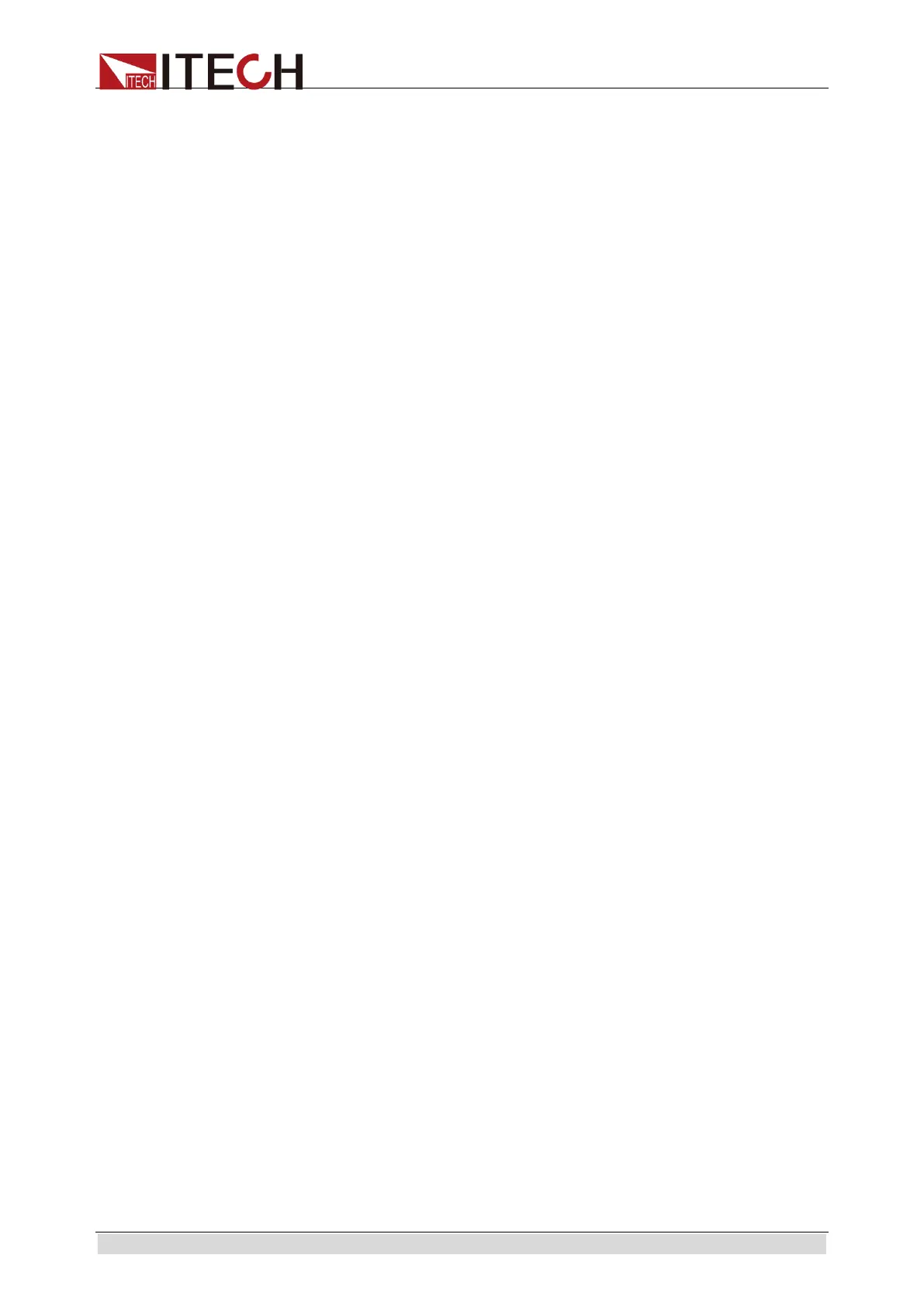Remote Control
Copyright © Itech Electronic Co., Ltd. 9
1.6 Queues
The Model 2000 uses two queues, which are first-in, first-out (FIFO) registers:
Output Queue - used to hold reading and response messages
Error Queue - used to hold error and status messages
The status model (Figure 4-5) shows how the two queues are structured with
the other registers.
1.6.1 Output queue
The output queue holds data that pertains to the normal operation of the
instrument. For example, when a query command is sent, the response
message is placed on the Output Queue.
When data is placed in the Output Queue, the Message Available (MAV) bit in
the Status Byte Register sets. A data message is cleared from the Output
Queue when it is read. The Output Queue is considered cleared when it is
empty. An empty Output Queue clears the MAV bit in the Status Byte Register.
Read a message from the Output Queue by addressing the electronic load to
talk after the appropriate query is sent.
1.6.2 Error queue
The Error Queue holds error and status messages. When an error or status
event occurs, a message that defines the error/status is placed in the Error
Queue. This queue will hold up to 10 messages.
When a message is placed in the Error Queue, the Error Available (EAV) bit in
the Status Byte Register is set. An error message is cleared from the
Error/Status Queue when it is read. The Error Queue is considered cleared
when it is empty. An empty Error Queue clears the EAV bit in the Status Byte
Register. Read an error message from the Error Queue by sending either of the
following SCPI query commands and then addressing the electronic load to
talk:
:SYSTem:ERRor?.
1.7 Status Byte and Service Request (SRQ)
Service request is controlled by two 8-bit registers: the Status Byte Register
and the Service Request Enable Register.
1.7.1 Status Byte Register
The summary messages from the status registers and queues are used to set
or clear the appropriate bits (B0, B2, B3, B4, B5, and B7) of the Status Byte

